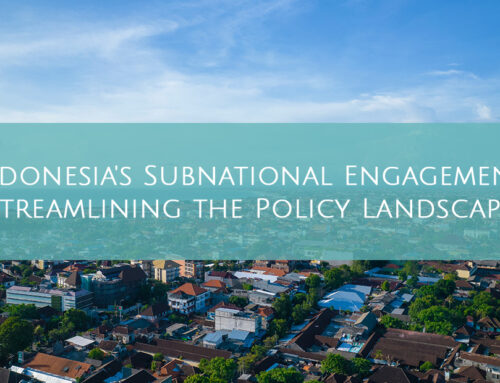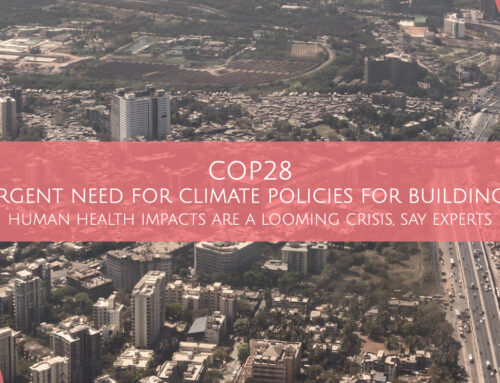The Building Sector’s continuous ‘Volkswagen’ Moment
A couple of weeks ago I had the privilege of catching up with one of the hero’s of the V.W. emissions scandal, Drew Kodjak, the Executive Director of the International Council on Clean Transportation (ICCT). His team performed road tests on a small random sample of EU imported cars and found discrepancies. They reported them to State authorities, which ran more tests, found the same discrepancy, and then reported to the U.S. EPA. The process took about 18 months, and well, you probably know the rest of the story.
I joked at the time that it would not be that hard – or take that long – to find non-compliant buildings. Now I’m back in Paris helping prepare for the first ever Buildings Day at COP21 on December 3, and the joke has worn off. In fact it is no laughing matter that the sector that is responsible for around 30% of global greenhouse gas emissions[i] (almost twice as much as road transport) is not effectively regulating the energy performance and efficiency of buildings. We continue to accept that perfect compliance with energy codes is almost unheard of in the building sector, but would never knowingly drive a car that was only 90% compliant.
Globally there is a patchy coverage of mandatory energy performance standards for buildings and generally poor compliance with the standards that exist. The global south is particularly lagging behind. Where energy performance regulations do exist, compliance remains a major challenge. Globally we are missing out on the energy savings from buildings required by law due to poor compliance, with average compliance rates ranging from 40% to 90% of new buildings globally.[ii] GBPN’s best-practices policy research found that implementation was poor even among the jurisdictions with best-in-class energy codes for new buildings[iii]. Non-compliance is illegal, and costs real money. If for example, full compliance were achieved in U.S. Buildings it would save between US$63 – $189 million/year or US$37 billion in life-time energy savings[iv]. Non-compliance also presents a major political barrier for implementing the ambitious performance requirements necessary to limit global warming to below 2 degrees Celsius because is helps the policy laggards argue; “if you can’t even implement the regulations you have, how can we possibly commit to more stringency?”
Although the current situation is dire, it is not hopeless. The recognition of the importance of the building sector as key to tackling climate change at COP21 provides an important platform for the many governments, companies and supporting organizations to showcase existing solutions and commitments. The building sector has demonstrated that it can achieve energy savings despite the lack of effective regulation and enforcement. However, if it is to deliver the magnitude of energy savings and GHG mitigation required to stay below 2oC warming, today’s state of the art needs to become mainstream[v]. Investment in energy efficient buildings needs to nearly double from current levels to about $215billion/yr[vi](about 4% of current annual construction investment[vii].) by 2025 to unlock the remaining potential and contribute to limiting global warming to less than 2oC. This won’t flow unless building energy performance regulation is properly enforced to help transform the market place.
To provide support for improving compliance GBPN and Pacific Northwest National Laboratory (PNNL) recently launched the Building Energy Codes Portal – a project of the IPEEC Building Energy Efficiency Task Group. The portal offers detailed searchable information on building code implementation and compliance in 23 countries, and a network of country and international experts ready to provide advice. To find out more, register for our Webinars on 22 October and 12 November .
We have been scandalized by the downfall of Volkswagen, by its corruption of U.S. vehicle emissions testing and its subterfuge of the real pollution impact of their products. It has cost V.W. billions of dollars, cost the job of its CEO and done serious damage to the reputation of the brand. And so it should. Road transport is responsible for approximately 17% of Global GHG emissions and a major source of urban air pollution[viii]..
The V.W. Scandal has left me wondering why we should care any less about the energy performance of our buildings, those places that we spend more than 85% of our lives, the assets that represent 50% of global wealth, and the symbols of home, cities, and culture. Post COP21 we need to prioritize helping governments create the regulatory environments for buildings that are as effective as those for vehicles, as tough to cheat, and as disastrous to those who try.
[i] UNEP 2013 – Emissions Gap Report
[ii] Various sources
[iii] GBPN 2013 – Policy Tool for New Buildings www.gbpn.org
[iv] Stelberg,S. 2013 Assessment of Energy Efficiency Achievable from Improved Compliance with U.S. Building Codes: 2013-2030 , Institute for Market Transformation, U.S.A, February.
[v] GBPN 2013 – Closing the Emissions Gap in the Buildings Sector
[vi] International Energy Agency 2015 – Energy Efficiency Market Report
[vii] Construction Outlook 2020: http://blog.procore.com/blog/construction-outlook-for-2020
[viii] Global Fuel Economy Initiative http://www.fiafoundation.org/our-work/global-fuel-economy-initiative/about-gfei
Related News
Share This Story, Choose Your Platform!
Stay in touch with how we’re transforming the buildings sector
GBPN runs innovative building policy reform programs in key regions around the world that aim to tackle the climate emergency by decarbonising the buildings sector. Stay up to date with our newsletter.
Stay in touch with how we’re transforming the buildings sector
GBPN runs innovative building policy reform programs in key regions around the world that aim to tackle the climate emergency by decarbonising the buildings sector. Stay up to date with our newsletter.






